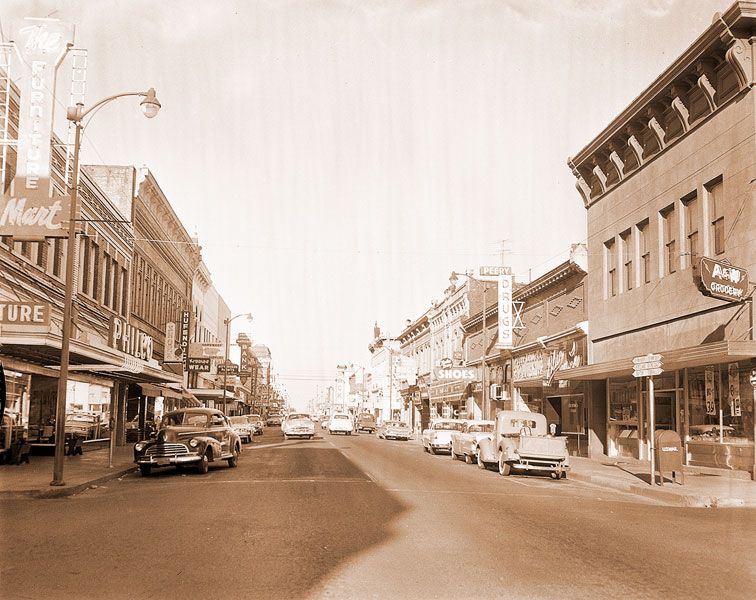The skies aren't falling but the trees sure are

We love our downtown trees. That is, we do as long as they don’t grow too tall, shed too many leaves, create too much mess, clog too many gutters, bust up too many sidewalks or threaten too many passersby as they age.
Mature trees are, of course, prone to all those problems. That’s particularly true if they were not chosen, located and planted with long-term compatibility in mind, and in large measure, these weren’t.
As period photos clearly indicate, downtown McMinnville remained virtually treeless through the city’s first 125 years. That was the case even back in its Walnut City heyday, before the Columbus Day Storm uprooted walnuts by the thousands in the fall of ’62.
Today’s lush downtown treescape was the product of an aggressive planting campaign launched in the mid-’70s.
In went around 400 maples, dogwoods hawthorns and hornbeams, with a few ginkgos thrown in for good (or bad) measure. And by official count, some 145 original or successor trees still stand downtown today.
But only 22 figure to survive a pending downtown redevelopment. That’s because it calls for not only a major external facelift above ground, but also a comprehensive overhaul of internal water, sewer and storm drain networks underground, which compete for space with a vast web of mature tree roots.
Consultants are recommending removal of 25 trees over failing health, 58 over lifted roots, 27 over unworkable locations and 10 over incompatibility with current planting standards. And sadly, they concede that protecting the mostly thinner, younger set slated for saving will post significant challenges as the work proceeds.
What to do?
We really see only one workable course here:
Recognize reality and think long term. Start all over, and do it right this time, based on 50 years of valuable experience.
Plant a diverse mix of smaller varieties with less-intrusive root systems. Use vaults, wells, air gaps, spacing and other means in the arborist’s arsenal to limit street, sidewalk and utility line conflict.
Plant the largest specimens the budget will afford. Then sit back patiently and wait for nature and Oregon’s seemingly incessant rain to take their course.
If it worked in last century’s mid-’70s, it will work in this century’s mid-’20s. We can rest assured the rich green of our downtown tree canopy will return in the fullness of time.
Meanwhile, we’ll have to get used to a more genuine form of period look. We’ll have to get used to the way downtown McMinnville was captured in all those historic black-and-white postcards of yore — with nary a living tree in sight, not even a stray walnut.








Comments